It is, indeed pretty country, near the Slovenian border. Ivana was wearing a tee-shirt with the Croatian slang expression “Sta da?”—literally, “What yes?”, which she translated as a skeptical “Really?” The local guide in Kumrovec told us about what life was like in the Croatian countryside when Josip Broz was born, in 1892, and about his family background, youth, and work experience that led to him joining the Communists and becoming Tito. The house in which he was born was one of the nicer, larger ones in the village. The schoolroom where he got his limited formal education was, presumably, just as he had left it in the early 1900s, including the exact same benches and desks (he sat in the second row), a switch with which to punish lazy students on the teacher’s desk and a crucifix and portrait of Austro-Hungarian emperor Franz Josef on the wall.
When Ivana asked how much more time we wanted to wander around the village, the consensus was “none.” Kumrovec was generally agreed to be the least interesting stop on the tour. As one person put it: “If you’ve seen one open-air museum, you’ve seen them all.” On consideration, learning from the guide about how difficult and marginal the life of a Croatian peasant was, circa 1900, was something important to know, but, still, the place itself wasn’t exciting.
Then we went driving along more winding country roads, until we got to our lunch stop, a cute country inn called Gresna Gorica, across the valley from the impressive castle of Veliki Tabor. We were seated on an elevated, covered terrace with a view over the heavily wooded countryside, and there we had one of the best lunches on the trip.
On the way back to Zagreb, we stopped at Luznica Castle, an 18th-century manor house, now operated by the sisters of charity of St. Vincent de Paul as a retreat and conference center.
Several of us were interested in visiting the Mestrovic Atelier in Zagreb, which had not been open on Monday. Ivana called ahead, and they agreed to hold it open for us past their usual closing time of 6:00. Ivan Mestrovic (1883-1963) was Croatia’s greatest sculptor. This was where he worked between 1924 and 1942, when he left Croatia, after being imprisoned for a short time by the Fascist regime there. He spent the war years in Rome and Switzerland, and afterwards refused to return to Communist Yugoslavia, instead taking teaching positions in the United States, first at Syracuse and then at Notre Dame, which is where I first became aware of his work. I like it very much, and the museum was very enjoyable.
Mary Joy and I then went to dinner at Trilogija. I had fried squid and she had the shrimp and mango risotto that I had had the day before. The meal was very good, but we didn’t enjoy it quite as much as we had enjoyed Monday’s lunch. I decided that I am not fond of squid, unless it’s small and breaded.
We had noticed that the street in front of the restaurant was gradually filling up with people. There is an 8 o’clock prayer service at the shrine of Our Lady of the Stone Gate, every Tuesday evening. The number of people there, mostly young, was impressive. There were some folky hymns, and some readings, and the rosary—“Hail Mary” in Croatian is “Zdravo Mario.” (An interesting sidelight to that is that we’d heard that in Croatia, greeting someone with “zdravo,” meaning “hello,” was frowned upon as a Serbianism. A true Croatian would say “bok” instead. This is part of the nationalist attempt to pretend that Croatian and Serbian are two different languages, sort of like someone claiming that the British and Americans speak two different languages, instead of, as George Bernard Shaw put it, being two peoples separated by the same language. But apparently you can't say "bok" to the blessed Virgin.)
We walked down the hill into the Jelacic Square, vibrant and full of people, and then to our hotel.






























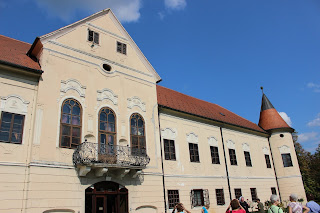






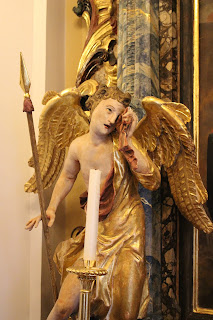



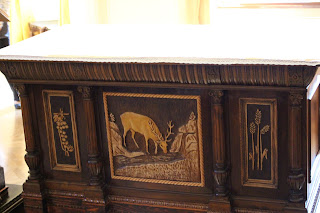





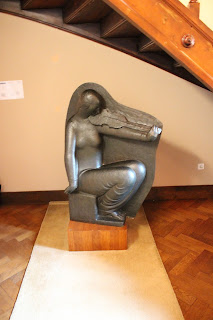





















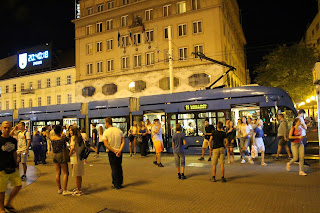
No comments:
Post a Comment